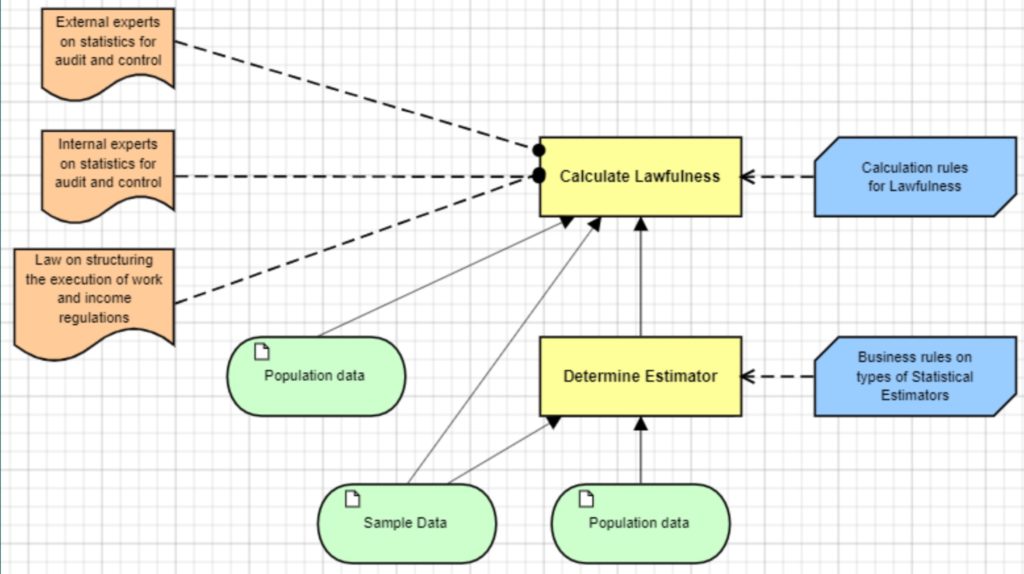Close Is Not Close Enough. Keith Swenson, Fujitsu
A few months ago at bpmNEXT, I saw Keith Swenson give an update on the DMN Technology Compatibility Kit, and we’re seeing a bit of a repeat of that presentation here at DecisionCAMP. The TCK defines a set of test cases (as DMN decision models, input data and expected results) that assure conformance to the specification, plus a sample runner application that will pass the models and data to the vendor’s engine and evaluate the results.

There are about 120 test models and 1600 test cases, supporting only DMN 1.2; these tests come from examining the specification as well as cases from practice. It’s easy for a vendor to get involved in the the TCK, both in terms of running it against their engine and in terms of participating through submitting new test models and cases. You can see the vendors that have submitted their results; although many more vendors claim that they “have DMN”, their actual level of compatibility may be suspect.
The TCK committee is getting ready for DMN 1.3, and considering tests for modeling tools in addition to the current tests for the engine. He also floated the idea of a standardized API for DMN as a service, so that the calling application doesn’t need to know which engine it’s calling — possibly something that’s not going to be a big hit with vendors.
Business innovation of BPO realized by Task Center and AI and Rule Engine. Yoshihito Nakayama, NTT DATA INTRAMART
Yoshihito Nakayama presented on the current challenges of BPO with respect to improving productivity, and how they are resolving this using AI and a rules engine to aggregate and assign human tasks from multiple systems to different team members. This removes the requirement to manually review and assign work, and also provides a dashboard for visualizing work in progress and future forecasts.

AI is used to predict and optimize task classification and assignment, based on time required to complete the task and the individual worker skill level and productivity. It is also used to predict workload for task types and individual workers.
Their visualization dashboard shows drilldowns on current and past productivity, plus future forecasts. The simulation models for forecasting can be fine-tuned to optimize for cost, performance and other factors. It brings together work monitoring from all systems, including RPA processes. They’re also using process mining on a variety of systems to create a digital twin of the organization for better tracking and predictions, as well as other tools such as voice and image identification to recognize what tasks are being done that are not being recorded in any system logs.
They have a variety of case studies across industries, looking at automating non-routine work using case management, BPM, RPA, AI and rules.
Spaghetti Spreadsheets Untangled – Benefits of decision modeling when uncovering complex business logic hidden in spreadsheets. Charlotte Bouvy, M.C. Bouvy Consultancy
Charlotte Bouvy presented on her work done with SVB, the Netherlands social insurance administrator, on implementing business rules management. They are using DMN-based wizards for supporting 1,500 case workers, and the specific case was around the operational control and audit departments and the “lawfulness” of how the assessment work is done. Excel spreadsheets were used to do this, which had obvious problems in terms of being error prone and lacking domain-specific business logic. They implemented their SARA system to replace the spreadsheets with Oracle OPA, which allowed them to more accurately represent knowledge, as well as separate the data from the decision model while creating an executable model.

These type of audit processes require sampling over a wide variety of case files to compare actual payments against expected amounts, with some degree of aggregation within specific laws being applied. Moving to a rules engine allowed them to model calculations and decisions, and separate data and model to avoid errors that occurred when copying and pasting data in spreadsheets. The executable model is now a single source of truth to which version control and change management can be applied. They are trying out different ways of using the SARA system: directly in Oracle Policy Modeler for building and debugging; via a web interview and an RPA robot for data input; and eventually via direct integration with the SVB’s case management system to load data.
